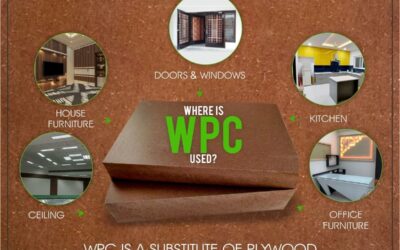Comparative Analysis of Interior Design Materials
When it comes to interior design, selecting the right materials is crucial for achieving both aesthetic appeal and functionality. With numerous materials available in the market, it can be overwhelming for designers and homeowners to choose the most suitable option. In this article, we will conduct a comparative analysis of four commonly used interior design materials: WPC, marine plywood, commercial plywood, and PVC foam sheet. By exploring their advantages, disadvantages, and potential applications, we aim to help you make an informed decision for your next interior design project.

WPC: A Comprehensive Evaluation for Interior Design Applications
Wood Polymer Composite (WPC) is a versatile material that has gained popularity in interior design due to its durability and aesthetic appeal. It is made by combining wood fibers or sawdust with a mixture of plastic polymers. WPC offers excellent resistance to moisture, pests, and rot, making it suitable for areas prone to dampness, such as bathrooms and kitchens. Additionally, it can be easily molded into various shapes, allowing for creative and customized designs. However, WPC may not be ideal for high-traffic areas as it is prone to scratches and dents.

Marine Plywood: Advantages and Disadvantages in Interior Design
Marine plywood is specifically engineered to withstand water and moisture, making it an excellent choice for interior design projects in areas exposed to dampness or humidity, such as bathrooms or spa facilities. Its high strength and durability ensure that it can withstand heavy loads and remain structurally sound. However, marine plywood tends to be more expensive than other plywood options and may not be necessary for interior spaces that do not require extra moisture resistance. Additionally, its limited availability and specific application make it less versatile compared to other materials.

Commercial Plywood: The Pros and Cons for Interior Design Projects
Commercial plywood is a widely used material in interior design due to its affordability and versatility. It is made by bonding together several layers of wood veneers, providing excellent strength and stability. Commercial plywood is available in various thicknesses and grades, making it suitable for a wide range of applications. Its smooth surface allows for easy finishing and painting, enabling designers to achieve desired aesthetics. However, commercial plywood is susceptible to moisture and may warp or delaminate if not properly sealed. Thus, it should be used in areas where moisture exposure is minimal.






PVC Foam Sheet: Exploring its Potential in Interior Design
PVC foam sheet, also known as expanded PVC, is a lightweight and cost-effective material that has gained popularity in interior design. It offers excellent resistance to moisture, chemicals, and fire, making it suitable for a variety of applications, including wall cladding, furniture, and ceiling panels. PVC foam sheet is easy to cut, shape, and install, allowing for flexible design options. However, it may not have the same structural strength as plywood and can be prone to scratching and fading over time, especially in high-traffic areas.
CONCLUSION: Choosing the Right Material for Interior Design Projects
In conclusion, selecting the right material for interior design projects requires careful consideration of various factors, including durability, moisture resistance, versatility, and budget. WPC offers a durable and customizable option, while marine plywood provides excellent moisture resistance. Commercial plywood is a cost-effective and versatile option, while PVC foam sheet offers resistance to moisture and chemicals. Ultimately, the choice of material should be based on the specific requirements of the project and the desired aesthetic outcome. By understanding the advantages and disadvantages of these materials, designers and homeowners can make informed decisions and create stunning interior spaces that stand the test of time.





0 Comments